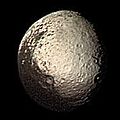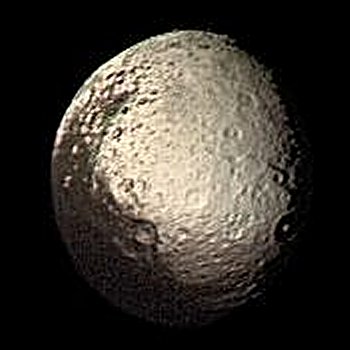Датотека:Iapetus by Voyager 2 - enhanced.jpg
Изглед
Iapetus_by_Voyager_2_-_enhanced.jpg (350 × 350 пиксела, величина датотеке: 19 kB, MIME тип: image/jpeg)
Историја датотеке
Кликните на датум/време да бисте видели тадашњу верзију датотеке.
| Датум/време | Минијатура | Димензије | Корисник | Коментар | |
|---|---|---|---|---|---|
| тренутна | 19:29, 4. април 2005. |  | 350 × 350 (19 kB) | Smartech~commonswiki | *'''Iapetus by Voyager 2 spacecraft, August 22, 1981''' *same as Iapetus_by_Voyager_2.jpg but focused on the mooon and feature-enhanced. *original image caption: Saturn's outermost large moon, Iapetus, has a bright, heavily cratered icy terrain and a da |
Употреба датотеке
Следећа страница користи ову датотеку:
Глобална употреба датотеке
Други викији који користе ову датотеку:
- Употреба на ar.wikipedia.org
- Употреба на be-tarask.wikipedia.org
- Употреба на be.wikipedia.org
- Употреба на ca.wikipedia.org
- Употреба на de.wikipedia.org
- Употреба на el.wikipedia.org
- Употреба на en.wikipedia.org
- Употреба на eo.wikipedia.org
- Употреба на es.wikipedia.org
- Употреба на eu.wikipedia.org
- Употреба на fr.wikipedia.org
- Употреба на gl.wikipedia.org
- Употреба на hr.wikipedia.org
- Употреба на it.wikipedia.org
- Употреба на ja.wikipedia.org
- Употреба на ko.wikipedia.org
- Употреба на la.wikipedia.org
- Употреба на lb.wikipedia.org
- Употреба на lt.wikipedia.org
- Употреба на lv.wikipedia.org
- Употреба на ms.wikipedia.org
- Употреба на mwl.wikipedia.org
- Употреба на no.wikipedia.org
- Употреба на pl.wikipedia.org
Још глобалног коришћења ове датотеке.




